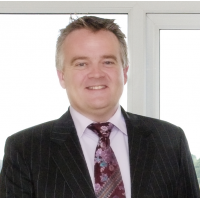
The phrase ‘past performance is no indicator of future results’ is often bandied around the financial services sector and with obvious cause.
No-one can truly predict what the future might bring and therefore it makes sense to hedge your bets, mitigate the risk and plan for as many eventualities as is humanly possible. Don’t just count on what has happened in the recent past.
When I look at the current state of the network sector however I’m firmly of the opinion, especially when it comes to broker firms conducting their due diligence and making a network choice, that you can get a clear idea about the Principal from its past performance. Also, most of the fees, charges, services, relationships and opportunities the network will be able to offer the firm are predicated on its ‘past performance’ and, to my mind, a downward spiral is very hard to turn around.
Certainly, Appointed Representative firms looking at their current (and future) network arrangements should be taking a close interest in the past performance of their fellow members because this often has a huge bearing on how the Principal will grow and develop in the future. One particularly important area, not just for networks but all financial services firms, is that of professional indemnity insurance (PII).
We will all have seen the significant impact that a failure to secure PI cover has had on certain networks and, given the nature of the PI market at the moment, this is only going to increase in importance in the months and years ahead.
The point to note is that, at any one time, there is only a limited reservoir of PI cover available and this has to cover all kinds of different firms with different risk profiles. Those who are perceived to be a greater risk, particularly with regard to past business, are going to find that the reservoir is much more difficult to access This is particularly pertinent in the wealth sector and those networks who have been active here will know only too well the damage that could be done by past activities. I will not name some of the high-profile mis-selling scandals but for those networks that have had AR firms actively involved in these areas, then the repercussions have been huge. We are not just talking about the money needed to investigate such claims but also the viewpoint of the insurers who look at this activity and make a decision on the potential for future recourse.
This is why it is so vitally important that AR firms look very carefully into a network’s current activity and that of the past. In particular they must look into the claims record of that business and, by doing this, they might find that the sustainability of that business is not what it should be.
PI insurers will certainly be taking this into account in terms of the cover they offer and the premiums they charge – without any doubt increased PI costs will impact on the charges to be levied by the network and their profitability. It is the nature of network membership that the current members will end up paying the price for past activity even if they themselves have been squeaky clean.
This is why AR firms, especially those focusing on the mortgage and protection market, should probably steer clear of those with large wealth management legacy issues. We, for example, made the decision a number of years ago to withdraw from that market and would have limited exposure to any potential claims. Other Principals were not so forward-thinking and I suspect we will see the fallout from this over time.
Making the decision to join a network, or to jump ships, has to be based on a variety of factors not just the fee that is being charged or the sweeteners that are being offered. Think about the sustainability of a Principal – if its model looks under pressure to you then it’s likely the PI insurers will feel the same way.















